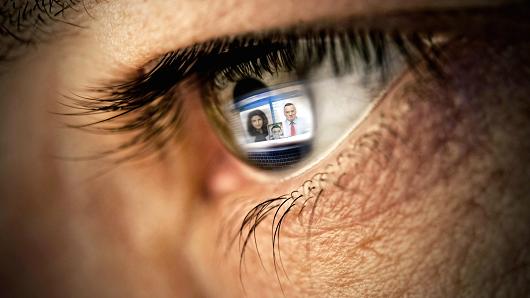Social media has been the ultimate water cooler over a long campaign season, and the destination for sharing, discussing and complaining about the latest headlines.
Today, election day Facebook, Snapchat, and Twitter will play an even larger role as Americans watch the election results play out on their smartphones. This year more than ever, the leading three social apps are pulling out all the stops to show on this high-tension say that they’re the place to find and share news. It’s competition for mindshare, and valuable ad dollars now and down the line.
Nearly a quarter of American adults said they’d turned to social media posts of Donald Trump or Hillary Clinton for news and information about the election, according to a July study by the Pew Research Center. That number compares to 15 percent who said they got information from the candidates’ websites or emails. And the number who learned about the candidates via social media has certainly grown in the past four months.
“The conversation about the election is happening on Facebook — it’s really become the new town hall,” says Facebook’s global politics and outreach director Katie Harbath. “And the campaigns seeing the greatest success on the platform are those that are really taking advantage of that by reaching out and having an actual, two-way dialogue with voters.”
Facebook says it’s seen political advertisers in competitive TV markets shift their ad spending to Facebook due to a lack of remaining TV inventory and Facebook’s targeting capability. And this campaign is unusual in that with the presidential race so competitive in the 11th hour, political advertisers have been running fundraising ads until the very last minute.
As an example of the social platform’s advantage relative to traditional political TV ads, Facebook cites New Hampshire, where there’s increased spending on the presidential battleground as well as a competitive Senate race. Most of the state is in the Boston TV market, but buying those TV spots is inefficient because those races targeting New Hampshire viewers are competing for ad time with Massachusetts political contests.
In addition to running targeted political ads, Facebook is offering a range of tools to help its users navigate election day. A landing page offers directions to users’ polling places, suggests they invite friends to plan to head to the polls together, offering voting requirements and a preview of your ballot.
Snapchat is similarly embracing the election, with a “Go Vote” bitmoji and a new geofilter to remind people to vote. Snapchat’s particularly focused on incorporating election day news: Offering a dynamic election results filter through a feed supplied by The Associated Press, similar to dynamic results geofilters used during the primaries and caucuses that were seen by more than 100 million users. In Live Stories, Snapchat will feature election results, acceptance and concession speeches, and the like. And of course there will be election-related geofilters for users to use and share with friends.
Snapchat is rolling a range of political ads, including its first sponsored lens for a U.S. political campaign. Priorities USA Action, which backs Clinton, is running a nation-wide lens Monday. The Clinton campaign is running a national geofilter with an “I’m with her” overlay. Sponsored geofilters typically reach 40 percent to 60 percent of Snapchatters, according to the company. The Trump campaign is also running a national geofilter on election day.
A wide variety of other candidates are also turning to Snapchat to reach its typically younger users. Interestingly, Senators Grassley and McCain, the two oldest serving senators, are both running Snap Ads. Senator Rob Portman, Republican of Ohio, did a statewide filter campaign, and just ahead of the election Republican Senator Peter Kinder ran filters in his state of Missouri.
Meanwhile Twitter is featuring an election day reminder to vote, and offering the option to direct message users information about Senate, federal and local races. (Here’s Twitter’s look at the election on the platform so far.)
Twitter reports a large uptick in PAC spending on its platform in the past week, focused on targeting in key swing stages. The company reports focused spending on get-out-the-vote efforts and issue-focused ads looking to persuade voters at the last minute. We’ll see if a flood of money boosts Twitter’s revenue — or if all this chatter draws more users — in this valuable political season and key fourth quarter for the social platform.
source”cnbc”





